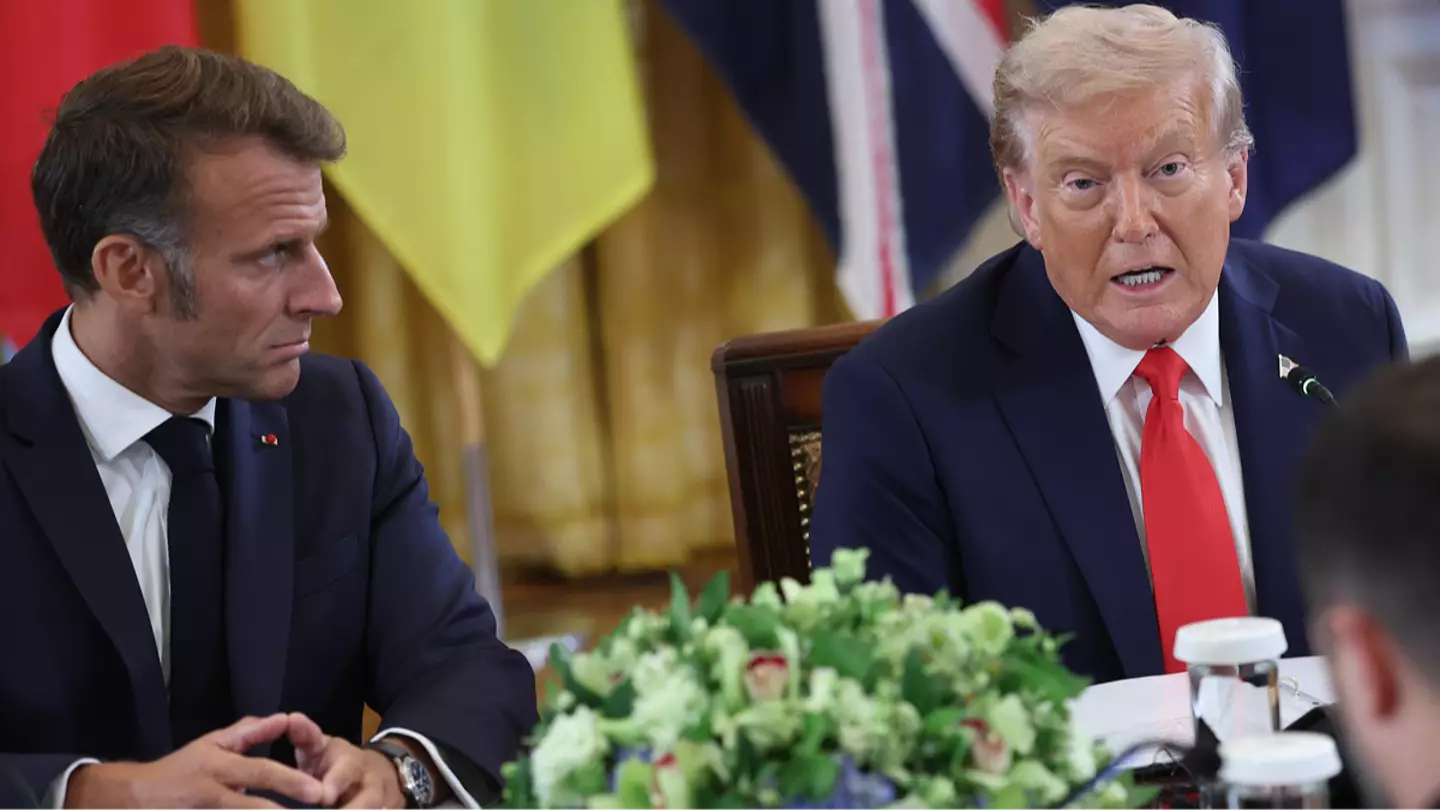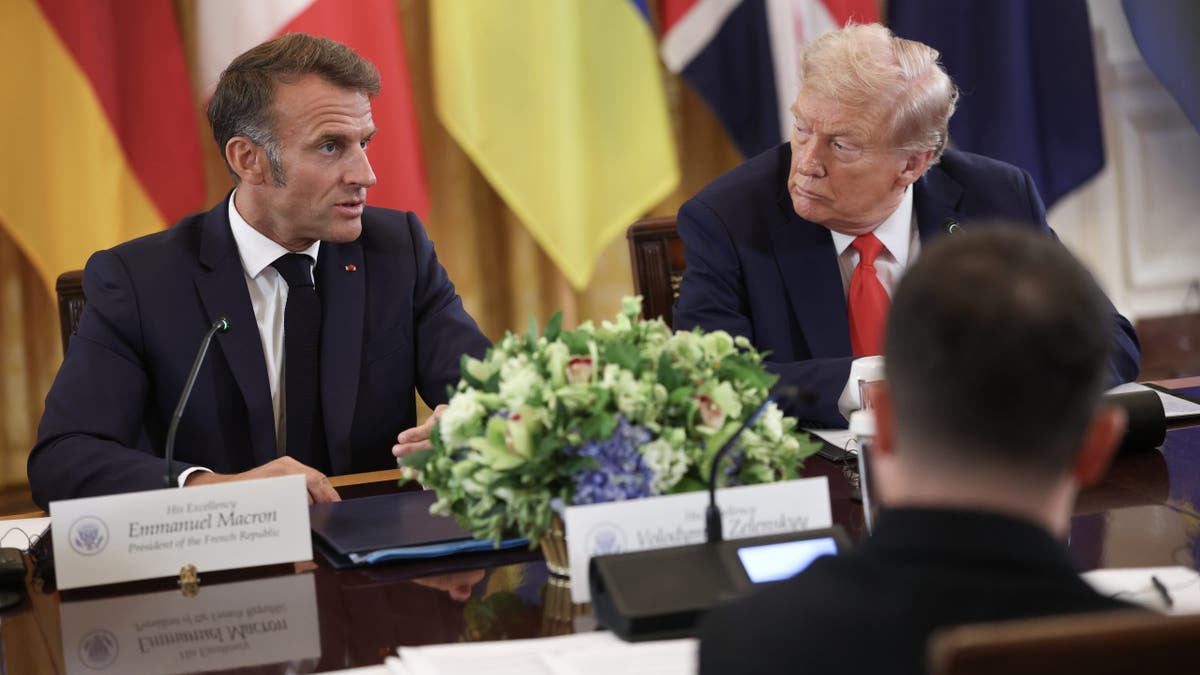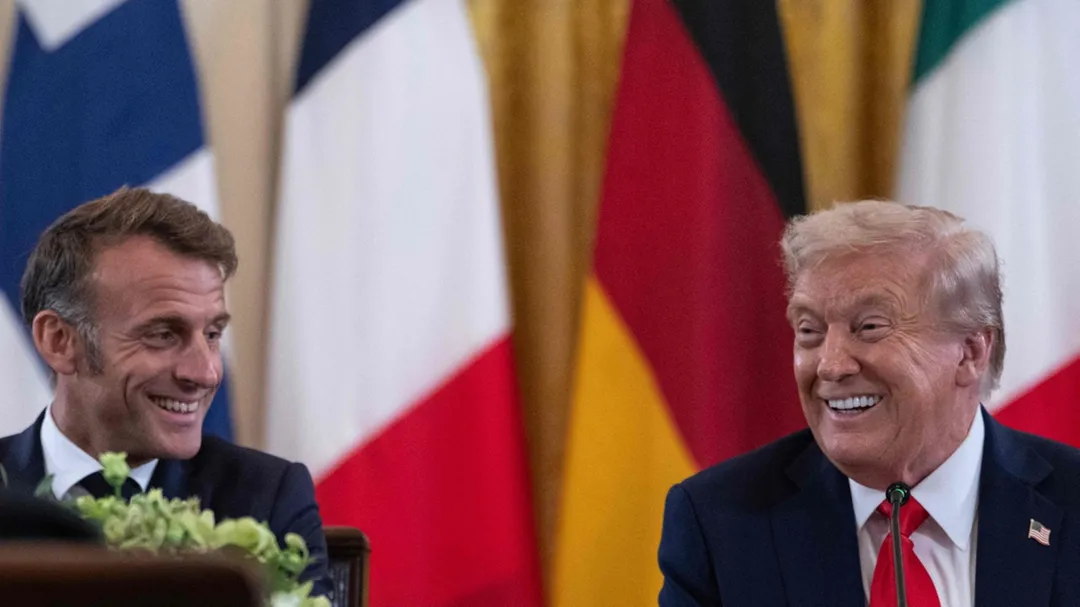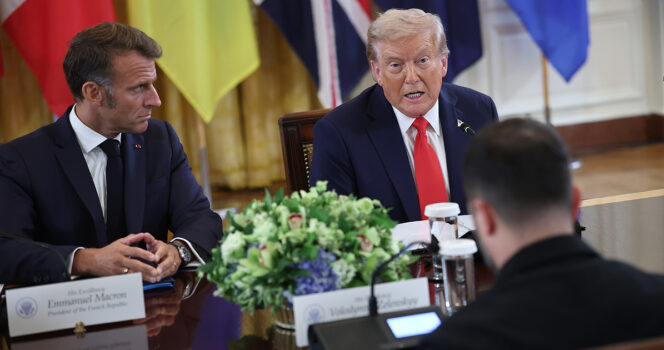On August 18, 2025, U.S. President Donald Trump hosted Ukrainian President Volodymyr Zelenskyy and several European leaders at the White House for high-level talks on the ongoing war in Ukraine. The meeting came just days after Trump held a private discussion with Russian President Vladimir Putin. While no ceasefire agreement was reached in that earlier conversation, the White House meeting with Zelenskyy and European allies drew global attention due to both its diplomatic significance and an unexpected hot-mic moment that captured Trump’s candid words about Putin.
The event marked a critical juncture in international diplomacy, as Ukraine continues to defend its sovereignty and European leaders seek to maintain unity in supporting Kyiv.
The White House Summit
According to coverage from The Times of India and The Australian, Trump welcomed Zelenskyy alongside French President Emmanuel Macron, UK Prime Minister Keir Starmer, and other European leaders in an expanded meeting. The leaders discussed possible frameworks for peace, humanitarian concerns, and the importance of keeping Ukraine at the center of any future negotiations (The Australian, Times of India).
The White House described the meeting as constructive, highlighting renewed optimism for dialogue. Images released from the session showed smiles and handshakes, in contrast to the often-tense atmosphere surrounding discussions of the war.

The Hot-Mic Moment
The summit made headlines when CBS News cameras caught Trump on a hot mic before the formal discussions began. As reported by People, Trump was overheard saying: “I think he wants to make a deal for me, as crazy as it sounds,” referring to Putin (People).
Although not an official policy statement, the remark quickly circulated across media platforms, fueling debate about Trump’s perception of his role as an intermediary between Russia and Ukraine.
Disagreements and Diplomatic Tensions
Despite the optimism, key challenges remain. As The Washington Post and The Guardian reported, there are significant disagreements over the path forward:
- Ceasefire First or Broader Deal?
European allies insisted on a ceasefire as a precondition for negotiations, while Trump has suggested moving toward a broader peace deal without such preconditions (Washington Post, The Guardian). - Territorial Integrity
Ukraine has consistently stated that it will not accept territorial concessions to Russia. Zelenskyy reiterated this position during the White House summit, aligning with European leaders who emphasized that sovereignty and territorial integrity are non-negotiable. - NATO Security Guarantees
Questions also remain about Ukraine’s long-term security, including its relationship with NATO. According to The Times (UK), discussions included the idea of providing air defense guarantees and continued military aid (The Times).
Reactions from Leaders
UK Prime Minister Keir Starmer said that “real progress” was made at the White House meeting, citing unity among the European leaders and a shared commitment with the United States. Macron also emphasized that dialogue remains essential, even if immediate solutions are out of reach.
U.S. Vice President J.D. Vance stressed that Ukraine must remain in control of its future, underscoring that Washington supports Kyiv’s right to make sovereign decisions (Washington Post).
Why the Hot-Mic Comment Matters
Although Trump’s hot-mic remark was not part of the official agenda, it resonated because it shed light on the interpersonal dynamics shaping diplomacy. Leaders often balance formal policy stances with private perceptions of their counterparts, and such candid moments can influence how negotiations are viewed publicly.
For Ukraine, where every diplomatic signal carries potential consequences on the battlefield, the remark underscored the importance of transparency and alignment among allies.

Broader Context
The war in Ukraine, now in its fourth year, continues to devastate communities and reshape global politics. According to the United Nations Office for the Coordination of Humanitarian Affairs (OCHA), millions of Ukrainians remain displaced, and humanitarian needs persist. The international community has spent billions of dollars on aid, with the United States and European Union leading support efforts.
Efforts toward peace have been attempted through multiple channels—including negotiations in Istanbul, meetings under United Nations frameworks, and shuttle diplomacy by leaders such as Turkey’s Recep Tayyip Erdoğan. So far, none have yielded a permanent ceasefire.
The White House summit represents another attempt to bridge divides, though its long-term impact remains to be seen.

Conclusion
The August 18 White House meeting between Trump, Zelenskyy, and European leaders highlighted both the potential and challenges of international diplomacy in addressing the war in Ukraine. The hot-mic moment added a layer of intrigue, but the substantive outcomes centered on reaffirming Ukraine’s sovereignty, planning future talks, and addressing urgent humanitarian concerns.
As the war continues, the unity of Western allies and the balance between firm support for Ukraine and diplomatic engagement with Russia will remain at the core of international efforts. Whether Trump’s approach will yield concrete results is still uncertain, but the summit underscored the global urgency of finding a pathway toward peace.
